Burning the Midnight Oil for Living Energy Independence
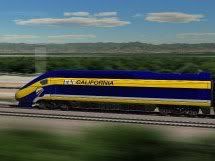 California is on a deadline from DC to either appropriate the funds to begin work on the first segment of the California HSR project, or else the Dept. of Transport will rescind California’s grant and hand the money over to other states.
California is on a deadline from DC to either appropriate the funds to begin work on the first segment of the California HSR project, or else the Dept. of Transport will rescind California’s grant and hand the money over to other states.
One of the key controversies is the fact that there is no guarantee that the funding required for building the complete system will be forthcoming. And so, the argument goes, if the first construction segment is built, but no additional Federal funding for HSR is ever again authorized and appropriated, California will be stuck with a White Elephant.
This is, indeed, the “risk” that the California Legislative Analyst Office (LAO) has focused on in its series of anti-HSR analyses.
The LAO’s analysis includes the presumption that the Federal funds already granted can simply be re-allocated by California to be spent in the way that the LAO advises, which is a quite bizarre fantasy to be set forward in what is supposed to be professional analysis at the California taxpayer’s expense. By including this fantasy in their analysis, they can evade the question of, “would we be better off doing nothing?”
Reality does not allow the question to be evaded. If we continue to do nothing on the argument that whatever step forward actually on offer is inferior to some fictitious imagined superior plan, we will in the end arrive in the future having done nothing, and will find out the hard way whether or not that was a wise decision to make.
Now, if the future is identical to the past, then a system that worked well enough in the past can work well enough in the future. However, if the future differs from the past ~ as history teaches us it always has before ~ then the systems that worked well enough in the past will be unsuited to the future.
What we need, “if” the Future differs from the Past, is the flexibility to adapt to changes. Both the changes we can see coming, and the changes that we cannot see coming.

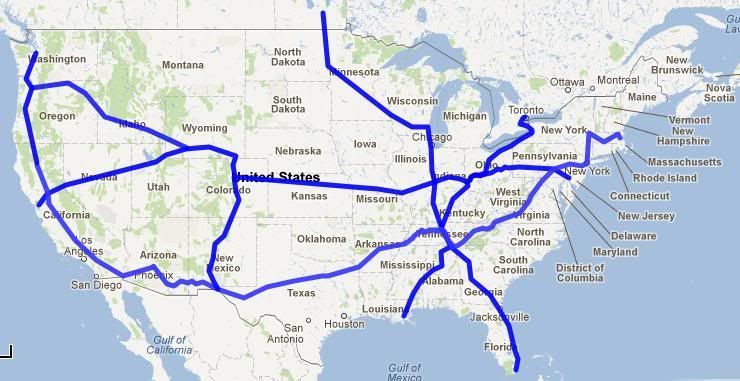 The last two weeks on the Sunday Train, I’ve been writing about the Steel Interstate.
The last two weeks on the Sunday Train, I’ve been writing about the Steel Interstate. 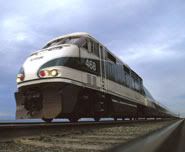 Express HSR is sexy. Indeed, its sexy enough that when Big Oil propagandizes against it, they have to paint it as too expensive or something that America is too incompetent to handle, since the idea of sitting in an actually comfortable rail seat, watching a movie on a laptop or snacking on a sandwich while flying along at two to three times highway speeds, “just like in France or Japan or Spain”, that’s too appealing to convince a big majority of people that it would be anything but nice to have. So they have to con people into thinking of it as an unrealistic pipe dream that the US can do what Spain has been doing for a decade, France for three decades, and Japan for half a century.
Express HSR is sexy. Indeed, its sexy enough that when Big Oil propagandizes against it, they have to paint it as too expensive or something that America is too incompetent to handle, since the idea of sitting in an actually comfortable rail seat, watching a movie on a laptop or snacking on a sandwich while flying along at two to three times highway speeds, “just like in France or Japan or Spain”, that’s too appealing to convince a big majority of people that it would be anything but nice to have. So they have to con people into thinking of it as an unrealistic pipe dream that the US can do what Spain has been doing for a decade, France for three decades, and Japan for half a century. This week’s Sunday Train is a trio of shorter topics. The first is a research development project to develop a modern steam train to run on biocoal. The target is a sustainable steam train that, as a headline grabber, will attempt to run at 130mph and break the world steam train speed record. There’s much to like about this research development project … but I am going to argue that biocoal to operate trains is not it.
This week’s Sunday Train is a trio of shorter topics. The first is a research development project to develop a modern steam train to run on biocoal. The target is a sustainable steam train that, as a headline grabber, will attempt to run at 130mph and break the world steam train speed record. There’s much to like about this research development project … but I am going to argue that biocoal to operate trains is not it.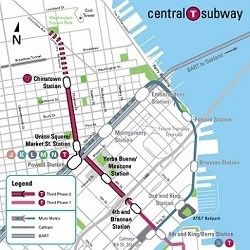 Second, SF’s MUNI transport agency is one of the ten agencies slated to split $760m in Prop1a(2008) bond funds improvements to systems interconnecting with the planned High Speed Rail system. The balance of the $950m goes to the three existing Amtrak California intercity rail services, the Capitol Corridor, the San Joaquin, and the Surfliner.
Second, SF’s MUNI transport agency is one of the ten agencies slated to split $760m in Prop1a(2008) bond funds improvements to systems interconnecting with the planned High Speed Rail system. The balance of the $950m goes to the three existing Amtrak California intercity rail services, the Capitol Corridor, the San Joaquin, and the Surfliner.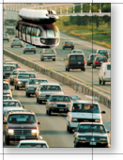 And third, a speculative look at an alternative technology that SF MUNI might deploy that money on, that actually would connect with the HSR system at the Transbay Terminal, as well as connecting to BART, the MUNI light rail network, the existing (and proposed alternative) Caltrain terminus at 4th and King, and provide express transit service along Geary Blvd.
And third, a speculative look at an alternative technology that SF MUNI might deploy that money on, that actually would connect with the HSR system at the Transbay Terminal, as well as connecting to BART, the MUNI light rail network, the existing (and proposed alternative) Caltrain terminus at 4th and King, and provide express transit service along Geary Blvd.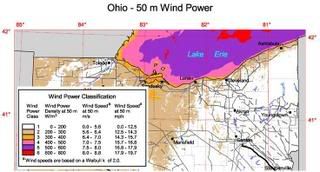 And why the Great Lakes? Because that’s where the wind blows, as shown on the trimmed down version of the 2004 50m wind speed map for Ohio to the right.
And why the Great Lakes? Because that’s where the wind blows, as shown on the trimmed down version of the 2004 50m wind speed map for Ohio to the right. 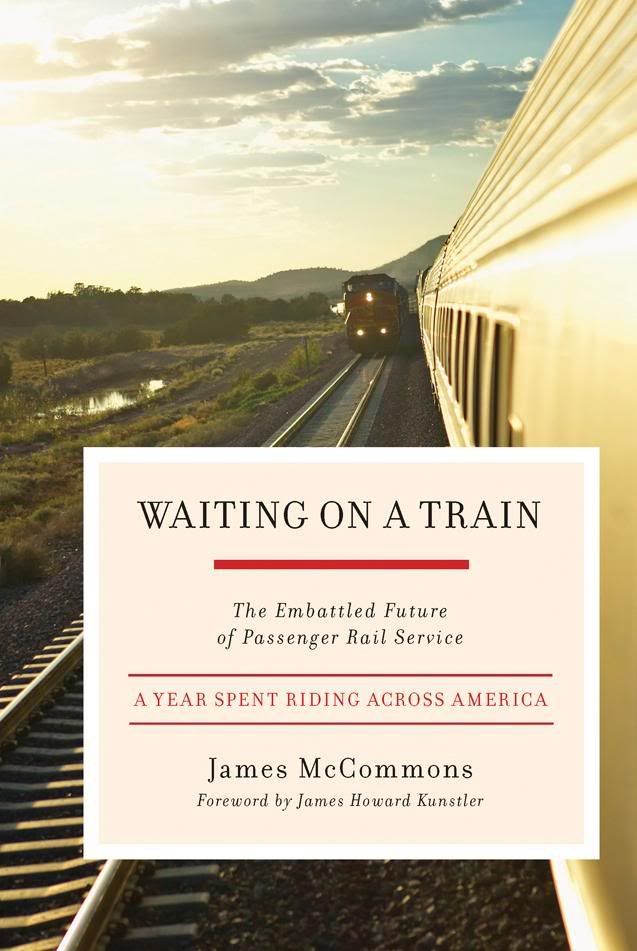 Back in the 29 Nov 2009 Sunday Train,
Back in the 29 Nov 2009 Sunday Train,  The Iowa Department of Transport has just completed the Chicago to Omaha Regional Passenger Rail System Planning Study, to select its preferred alignment for a detailed Environmental Impact Report.
The Iowa Department of Transport has just completed the Chicago to Omaha Regional Passenger Rail System Planning Study, to select its preferred alignment for a detailed Environmental Impact Report.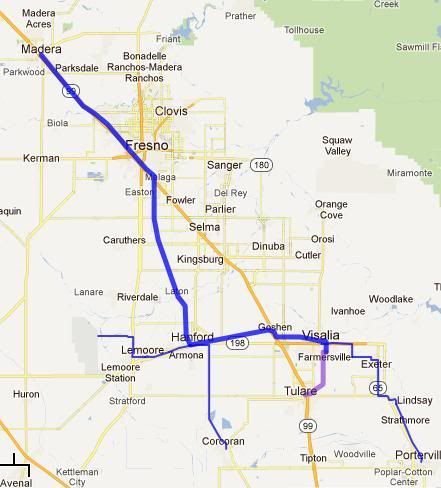 Kings County officials have been
Kings County officials have been  One element of the recent California HSR “revised” draft 2012 Business Plan (which we shall call the Other, Other Plan) involves looking to one particular means of finance in addition to general fund bond finance and Federal transport grant funding:
One element of the recent California HSR “revised” draft 2012 Business Plan (which we shall call the Other, Other Plan) involves looking to one particular means of finance in addition to general fund bond finance and Federal transport grant funding:
Recent Comments